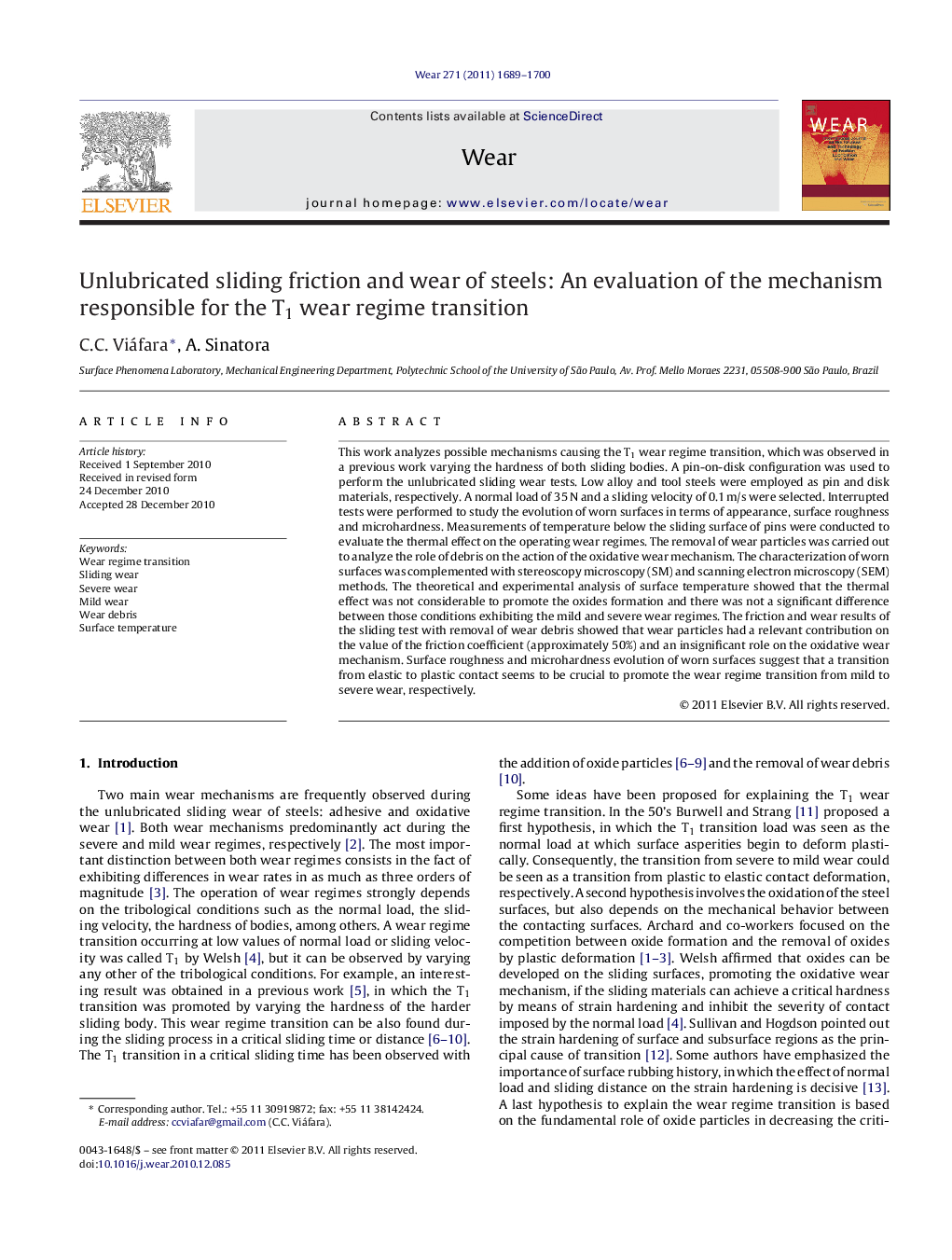| Article ID | Journal | Published Year | Pages | File Type |
|---|---|---|---|---|
| 618209 | Wear | 2011 | 12 Pages |
Abstract
This work analyzes possible mechanisms causing the T1 wear regime transition, which was observed in a previous work varying the hardness of both sliding bodies. A pin-on-disk configuration was used to perform the unlubricated sliding wear tests. Low alloy and tool steels were employed as pin and disk materials, respectively. A normal load of 35Â N and a sliding velocity of 0.1Â m/s were selected. Interrupted tests were performed to study the evolution of worn surfaces in terms of appearance, surface roughness and microhardness. Measurements of temperature below the sliding surface of pins were conducted to evaluate the thermal effect on the operating wear regimes. The removal of wear particles was carried out to analyze the role of debris on the action of the oxidative wear mechanism. The characterization of worn surfaces was complemented with stereoscopy microscopy (SM) and scanning electron microscopy (SEM) methods. The theoretical and experimental analysis of surface temperature showed that the thermal effect was not considerable to promote the oxides formation and there was not a significant difference between those conditions exhibiting the mild and severe wear regimes. The friction and wear results of the sliding test with removal of wear debris showed that wear particles had a relevant contribution on the value of the friction coefficient (approximately 50%) and an insignificant role on the oxidative wear mechanism. Surface roughness and microhardness evolution of worn surfaces suggest that a transition from elastic to plastic contact seems to be crucial to promote the wear regime transition from mild to severe wear, respectively.
Related Topics
Physical Sciences and Engineering
Chemical Engineering
Colloid and Surface Chemistry
Authors
C.C. Viáfara, A. Sinatora,
